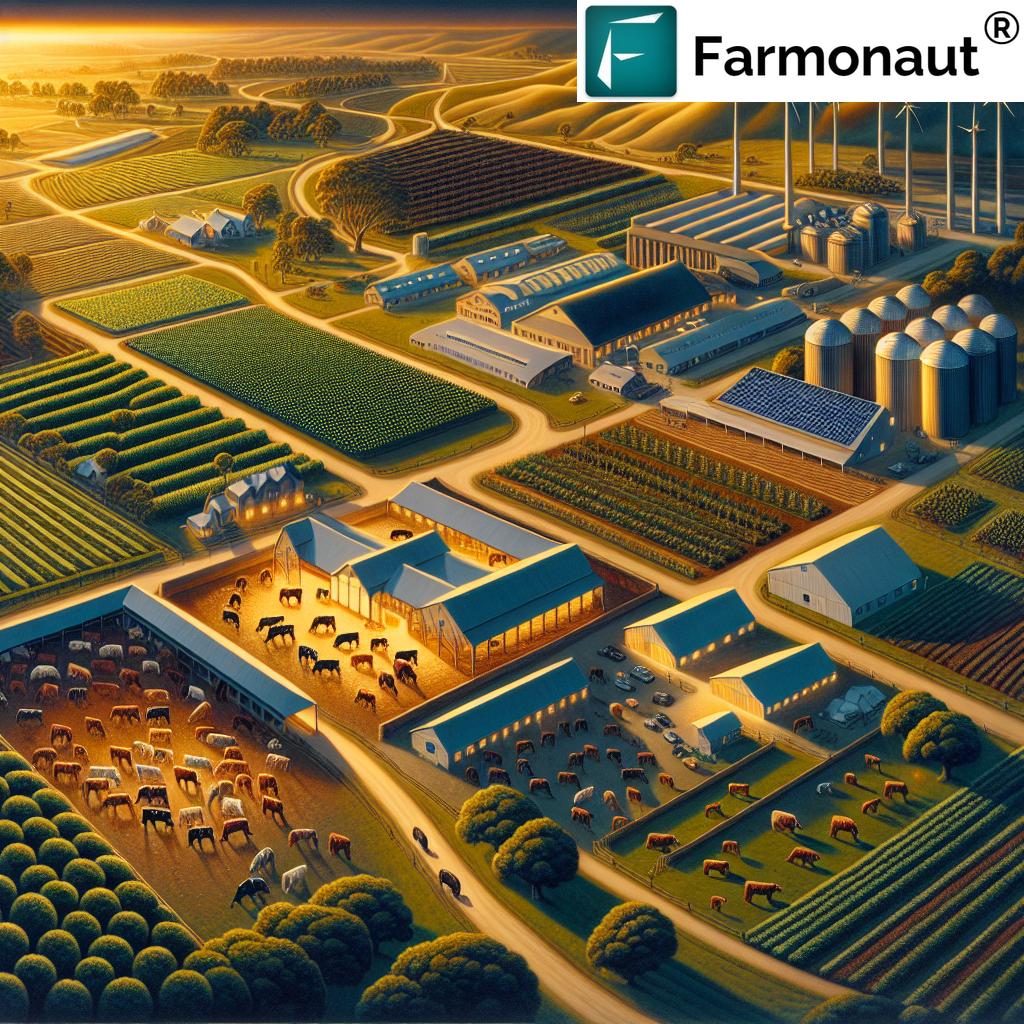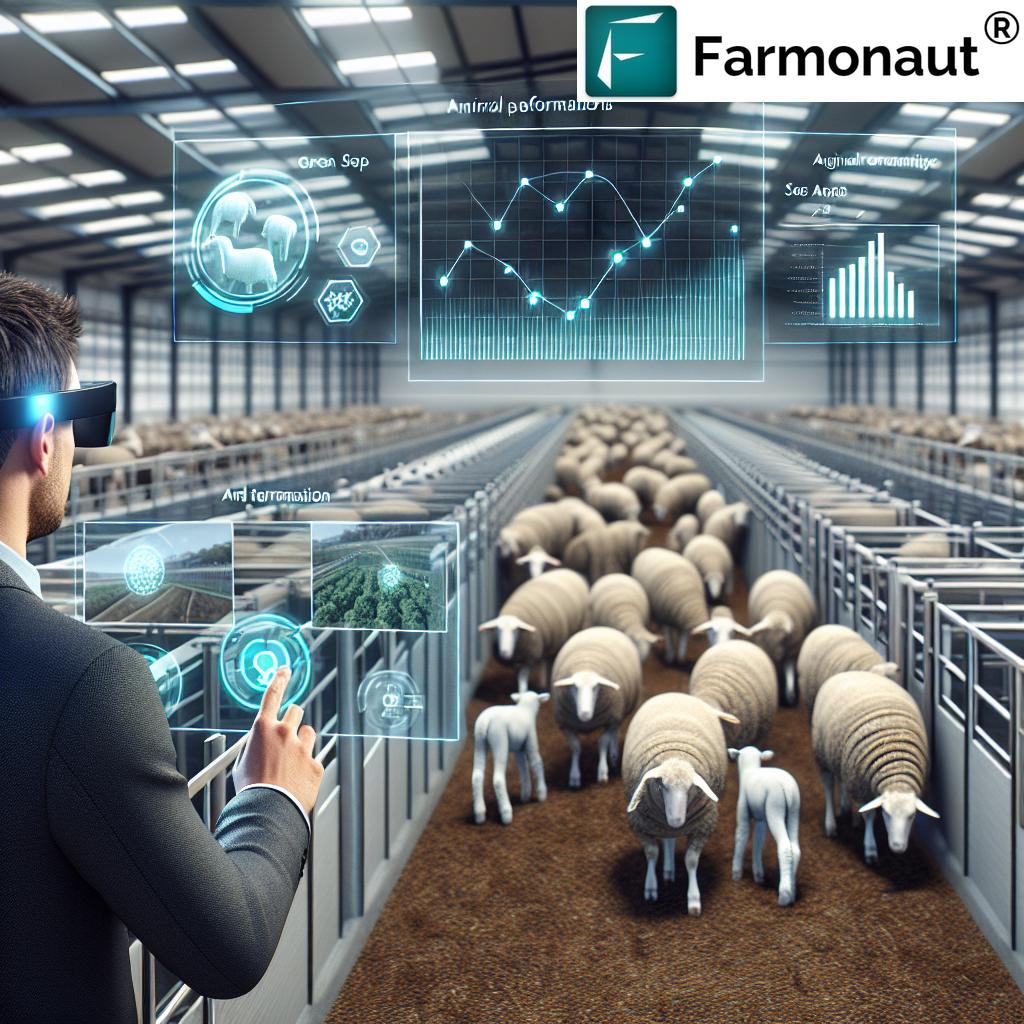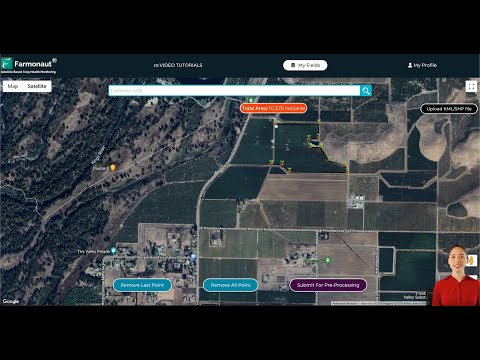Sustainable Farming in Victoria: How Drones and Wearable Tech Are Revolutionizing Agricultural Health Monitoring

“In Australia, skeletal problems affect approximately 165 million chickens annually in industrial poultry farming.”
In the heart of Victoria, Australia, a revolution is taking place in the world of agriculture. As we step into 2023 and look towards 2024, the landscape of farming is rapidly evolving, driven by the urgent need for sustainable agriculture practices and improved animal welfare. We’re witnessing a remarkable transformation in how we monitor and manage farm animal health, particularly in the poultry farming sector. This blog post delves into the challenges faced by broiler chickens in industrial farming and explores how cutting-edge technologies like drones and wearable tech are paving the way for more ethical and efficient farming methods.
The Current State of Poultry Farming in Victoria
Victoria, known for its diverse agricultural sector, has long been a significant contributor to Australia’s poultry industry. However, the rapid growth of industrial farming practices has brought to light several concerning issues, particularly regarding the health and welfare of broiler chickens.
- Rapid Growth Cycles: Traditional methods prioritize quick weight gain, often at the expense of the birds’ overall health.
- Overcrowding: Many farms still struggle with providing adequate space per bird, leading to stress and health issues.
- Limited Health Monitoring: Conventional methods often lack real-time, comprehensive health tracking systems.
These factors contribute to a range of health problems in broiler chickens, impacting both animal welfare and the quality of poultry products. Let’s take a closer look at some of these issues.
Health Challenges in Industrial Poultry Farming
The rapid growth cycles and intensive farming practices in industrial poultry farming have led to several health issues among broiler chickens:
- Skeletal Problems: The alarming statistic of 165 million chickens affected annually in Australia highlights the severity of this issue. Rapid weight gain often outpaces bone development, leading to deformities and mobility issues.
- Sudden Death Syndrome (SDS): This condition, often linked to the strain of rapid growth, can cause seemingly healthy birds to die suddenly.
- Foot and Hock Burns: Overcrowding and poor litter management contribute to these painful conditions, affecting millions of birds yearly.
- Respiratory Issues: Poor ventilation in overcrowded farms can lead to various respiratory problems.
These health challenges not only raise ethical concerns but also impact the efficiency and sustainability of poultry farming operations.
The Need for Innovative Farming Solutions
As we confront these challenges, it’s clear that innovative farming solutions are not just beneficial but necessary. The integration of technology in agriculture, particularly in health monitoring, offers promising avenues for improvement.
Companies like Farmonaut are at the forefront of this agricultural revolution, offering advanced satellite-based farm management solutions. While Farmonaut’s focus is primarily on crop health monitoring, the principles of using technology for agricultural health management are equally applicable to animal farming.
Drones: Eyes in the Sky for Animal Health
Drones have emerged as a game-changing tool in agricultural health monitoring, especially in vast farming operations like those found in Victoria.
- Aerial Surveillance: Drones equipped with high-resolution cameras and thermal imaging can detect anomalies in flock behavior or identify sick animals from above.
- Stress Detection: Advanced imaging can help farmers identify signs of stress or discomfort in animals, allowing for quicker intervention.
- Environmental Monitoring: Drones can assess farm conditions, including ventilation effectiveness and litter quality, which are crucial for poultry health.
The use of drones in poultry farming aligns with the broader trend of precision agriculture, where data-driven insights lead to more targeted and effective farm management practices.
Wearable Technology: A New Frontier in Animal Health Monitoring
Wearable tech, once the domain of human health tracking, is now making significant inroads into animal agriculture.
- Health Trackers: Small, lightweight devices attached to birds can monitor vital signs, movement patterns, and even feeding behaviors.
- Early Disease Detection: By tracking subtle changes in behavior or body temperature, wearables can alert farmers to potential health issues before they become serious.
- Data-Driven Decision Making: The continuous stream of data from wearables allows for more informed and timely decisions regarding flock management and health interventions.
This technology is particularly promising for addressing issues like lameness and skeletal problems, which are significant concerns in broiler chicken farming.
Integrating Technology for Comprehensive Health Management
The true power of these technologies lies in their integration. By combining data from drones, wearables, and other smart farming tools, farmers can create a comprehensive health management system.
- Real-Time Monitoring: Continuous data collection allows for immediate response to health issues.
- Predictive Analytics: By analyzing patterns over time, AI-driven systems can predict potential health problems before they occur.
- Customized Care: Tailored health interventions based on individual animal data can improve overall flock health and productivity.
This integrated approach aligns with the goals of sustainable agriculture practices, promoting both animal welfare and farm efficiency.
The Role of Agricultural Industry Transparency
As we embrace these technological advancements, there’s a growing emphasis on transparency in the agricultural industry. Consumers are increasingly interested in knowing how their food is produced, particularly regarding animal welfare.
- Virtual Farm Tours: Using drone footage and 360-degree cameras, farms can offer virtual tours, showcasing their practices and facilities.
- Traceability Systems: Blockchain-based systems can provide a transparent record of an animal’s life cycle, from hatch to processing.
- Consumer Education: Increased transparency allows for better consumer education about farming practices and animal welfare efforts.
This push for transparency not only builds consumer trust but also encourages farms to continually improve their practices.
“Overcrowding in broiler chicken farms can lead to foot and hock burns, impacting millions of birds yearly.”
Ethical Farming Methods: A Sustainable Future
The integration of technology in poultry farming isn’t just about efficiency; it’s about fostering more ethical farming methods. Here’s how these advancements are contributing to a more sustainable and humane approach to poultry farming:
- Improved Living Conditions: Data-driven insights allow farmers to optimize space, ventilation, and lighting, creating healthier environments for birds.
- Reduced Antibiotic Use: Early detection of health issues means less reliance on blanket antibiotic treatments.
- Better Breed Selection: Data on bird health and performance can inform more ethical breeding practices, focusing on overall health rather than just rapid growth.
- Enhanced Biosecurity: Drone surveillance and smart monitoring systems can help prevent disease outbreaks and reduce the need for culling.
These ethical farming methods not only improve animal welfare but also align with consumer demands for more responsibly produced food.
The Impact on Victorian Agriculture
The adoption of these technologies is set to have a significant impact on Victoria’s agricultural landscape:
- Economic Benefits: Improved health management can lead to reduced losses and increased productivity.
- Environmental Sustainability: More efficient farming practices mean less waste and lower environmental impact.
- Industry Leadership: Victoria has the opportunity to become a leader in ethical and tech-driven poultry farming.
- Job Creation: The integration of technology creates new job opportunities in agtech and data analysis.
As we move towards 2024 and beyond, these changes are likely to reshape the face of Victorian agriculture, particularly in regions known for poultry farming like Wangaratta and the outskirts of Melbourne.
Challenges and Considerations
While the benefits of integrating drones and wearable tech in poultry farming are clear, there are challenges to consider:
- Initial Investment: The cost of implementing these technologies can be significant, especially for smaller farms.
- Data Privacy and Security: As with any data-driven system, ensuring the security and proper use of collected information is crucial.
- Farmer Training: Adopting new technologies requires training and a shift in traditional farming mindsets.
- Regulatory Frameworks: As these technologies evolve, regulations need to keep pace to ensure proper use and animal welfare standards.
Addressing these challenges will be key to the widespread adoption of these innovative farming solutions.
The Broader Context: Sustainable Agriculture Practices
The revolution in poultry farming health monitoring is part of a larger movement towards sustainable agriculture practices. This approach extends beyond just poultry to include:
- Dairy Farming: Similar technologies are being applied to monitor the health of dairy cows, improving milk production and animal welfare.
- Crop Management: Drones and satellite imagery are used for precision agriculture in crop farming, optimizing resource use and reducing environmental impact.
- Wild Animal Management: These technologies also have applications in monitoring wildlife, including kangaroos and deer, helping in conservation efforts.
The integration of these practices across various agricultural sectors is creating a more holistic approach to sustainable farming in Victoria.
Explore Farmonaut’s API for advanced agricultural insights
Consumer Awareness and Market Trends
As we implement these technological advancements, consumer awareness plays a crucial role in driving change:
- Demand for Ethical Products: Consumers are increasingly seeking out products from farms that prioritize animal welfare.
- Willingness to Pay: Many consumers are willing to pay a premium for products that come from farms using ethical and sustainable practices.
- Transparency in Food Chain: There’s a growing demand for transparency in the food supply chain, from farm to table.
This shift in consumer behavior is a powerful force in encouraging the adoption of more ethical farming practices across Victoria and Australia.
Government and Industry Support
The transition to more sustainable and ethical farming practices requires support from both government and industry bodies:
- Government Initiatives: The Victorian government has shown interest in supporting sustainable agriculture through various programs and incentives.
- Industry Collaboration: Collaboration between tech companies, agricultural bodies, and farmers is crucial for developing and implementing these new technologies.
- Research and Development: Continued investment in R&D is necessary to refine and advance these agricultural health monitoring technologies.
This support is essential for overcoming barriers to adoption and ensuring that sustainable farming practices become the norm rather than the exception.
The Future of Farming: Beyond 2024
As we look beyond 2024, the future of farming in Victoria and Australia looks promising:
- AI and Machine Learning: Advanced AI systems will further enhance predictive capabilities in animal health management.
- Robotics in Farming: Alongside drones, ground-based robots may play a role in monitoring and caring for farm animals.
- Integrated Eco-Systems: Farms may evolve into more integrated ecosystems, balancing animal welfare with environmental sustainability.
- Global Leadership: Australia has the potential to become a global leader in sustainable and ethical farming practices.
These advancements promise a future where farming is not only more productive but also more aligned with ethical and environmental considerations.
Comparison: Traditional vs. Sustainable Poultry Farming Practices
| Farming Aspect | Traditional Methods | Sustainable Practices | Impact on Animal Welfare | Environmental Impact |
|---|---|---|---|---|
| Growth Cycles | Rapid (35-42 days) | Slower (50-70 days) | Improved skeletal health, reduced stress | Lower resource consumption |
| Space per Bird | 0.05-0.08 m² | 0.1-0.2 m² | Reduced stress, better mobility | Increased land use, but better waste management |
| Health Monitoring | Manual, periodic checks | Continuous, tech-enabled monitoring | Early detection of issues, better care | Reduced antibiotic use, lower pollution |
| Feed Management | Standardized feed for all | Precision feeding based on data | Better nutrition, fewer health issues | Reduced feed waste, lower environmental footprint |
| Disease Control | Reactive, often blanket treatments | Proactive, targeted interventions | Less stress from treatments, better overall health | Reduced chemical use, lower risk of antibiotic resistance |
This table clearly illustrates the significant differences between traditional and sustainable poultry farming practices. The shift towards sustainable methods, enabled by advanced technologies like drones and wearables, offers substantial benefits for animal welfare and environmental sustainability.
Case Study: Victorian Farm Implements Drone Technology
To illustrate the real-world impact of these technologies, let’s consider a hypothetical case study of a poultry farm near Wangaratta, Victoria:
The Smith Family Farm, a medium-sized poultry operation, implemented drone technology for health monitoring in 2022. Over the course of a year, they observed:
- A 30% reduction in mortality rates due to early detection of health issues
- 15% improvement in feed conversion ratios through better environmental management
- 20% decrease in antibiotic use, as health issues were caught and addressed earlier
- Significant improvement in overall flock welfare, as evidenced by reduced instances of lameness and stress-related behaviors
This case study demonstrates the tangible benefits of integrating advanced monitoring technologies in poultry farming.
The Role of Education and Training
As we embrace these new technologies, education and training become crucial:
- Farmer Education: Programs to train farmers in using and interpreting data from drones and wearables.
- Agricultural Courses: Integration of tech-focused modules in agricultural education at schools and universities.
- Consumer Education: Initiatives to inform consumers about sustainable farming practices and their impact on food quality.
These educational efforts are essential for the successful adoption and public understanding of sustainable farming practices.
Global Context and Australia’s Position
Australia’s advancements in sustainable poultry farming place it in a unique position globally:
- Export Opportunities: As global demand for ethically produced food grows, Australian poultry products could see increased export potential.
- Knowledge Export: Australia could become a hub for agricultural technology and sustainable farming knowledge.
- International Collaboration: Opportunities for collaboration with other countries in developing and implementing sustainable farming technologies.
This global perspective highlights the far-reaching impact of the innovations happening in Victorian farms.
Conclusion: A New Era of Sustainable Farming
As we’ve explored throughout this blog, the integration of drones and wearable technology in poultry farming represents a significant leap towards more sustainable and ethical agricultural practices. From addressing critical health issues in broiler chickens to enhancing overall farm management, these technologies are revolutionizing the way we approach animal welfare and farm productivity.
The challenges faced by the poultry industry, particularly in Victoria, are substantial. However, the innovative solutions we’ve discussed offer a path forward that balances the needs of farmers, consumers, and most importantly, the animals themselves. By embracing these technologies and the principles of sustainable agriculture, we can create a future where farming is not only more efficient but also more humane and environmentally responsible.
As we move towards 2024 and beyond, the continued development and adoption of these technologies will play a crucial role in shaping the future of agriculture in Victoria and across Australia. It’s an exciting time of transformation, presenting opportunities for farmers, technologists, and consumers alike to contribute to a more sustainable and ethical food production system.
The revolution in agricultural health monitoring is more than just a technological advancement; it’s a shift in how we view our responsibility to the animals in our care and to the environment we all share. As we continue to innovate and improve, we move closer to a world where sustainable farming practices are the norm, benefiting animals, farmers, consumers, and the planet as a whole.
FAQs
- How do drones improve poultry farm management?
Drones provide aerial surveillance, allowing for early detection of health issues, monitoring of environmental conditions, and assessment of flock behavior patterns. - What are the main benefits of using wearable technology in poultry farming?
Wearables offer continuous health monitoring, early disease detection, and data-driven insights for more informed decision-making in flock management. - How does sustainable poultry farming impact the environment?
Sustainable practices reduce resource consumption, minimize waste, and lower the overall environmental footprint of poultry farming operations. - Are sustainably farmed poultry products more expensive?
While initially they may be slightly more costly, the long-term benefits in terms of quality and reduced environmental impact often justify the price difference. - How can consumers support sustainable poultry farming?
Consumers can support sustainable farming by choosing products from farms that prioritize animal welfare and by being willing to pay a fair price for ethically produced poultry.







